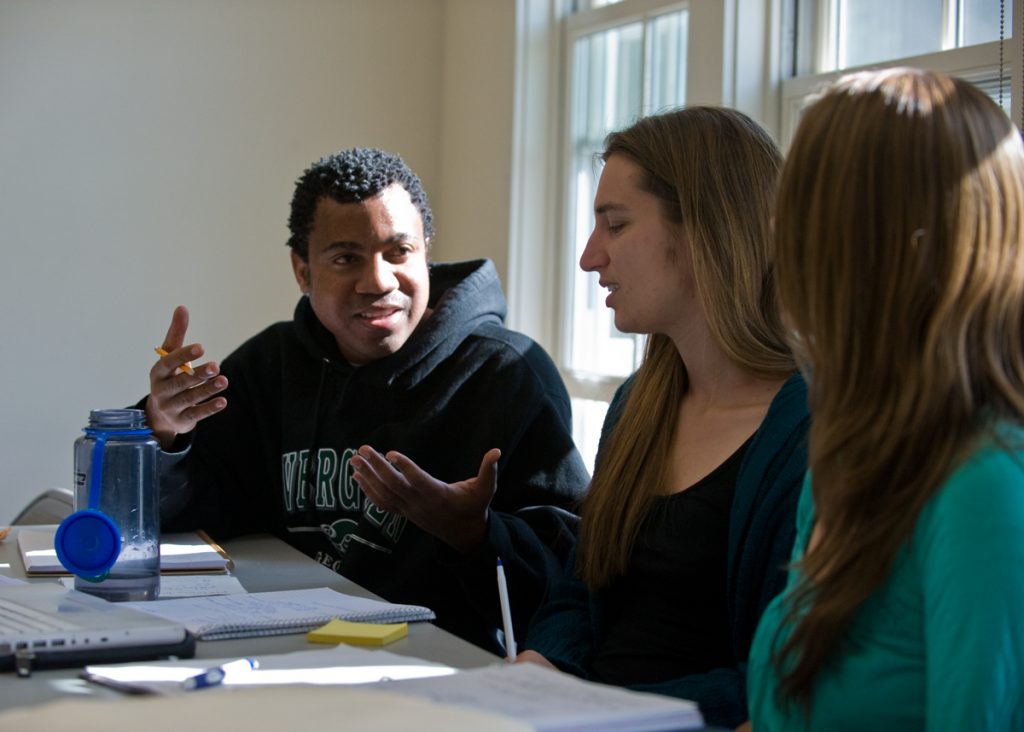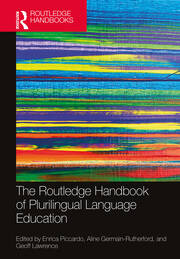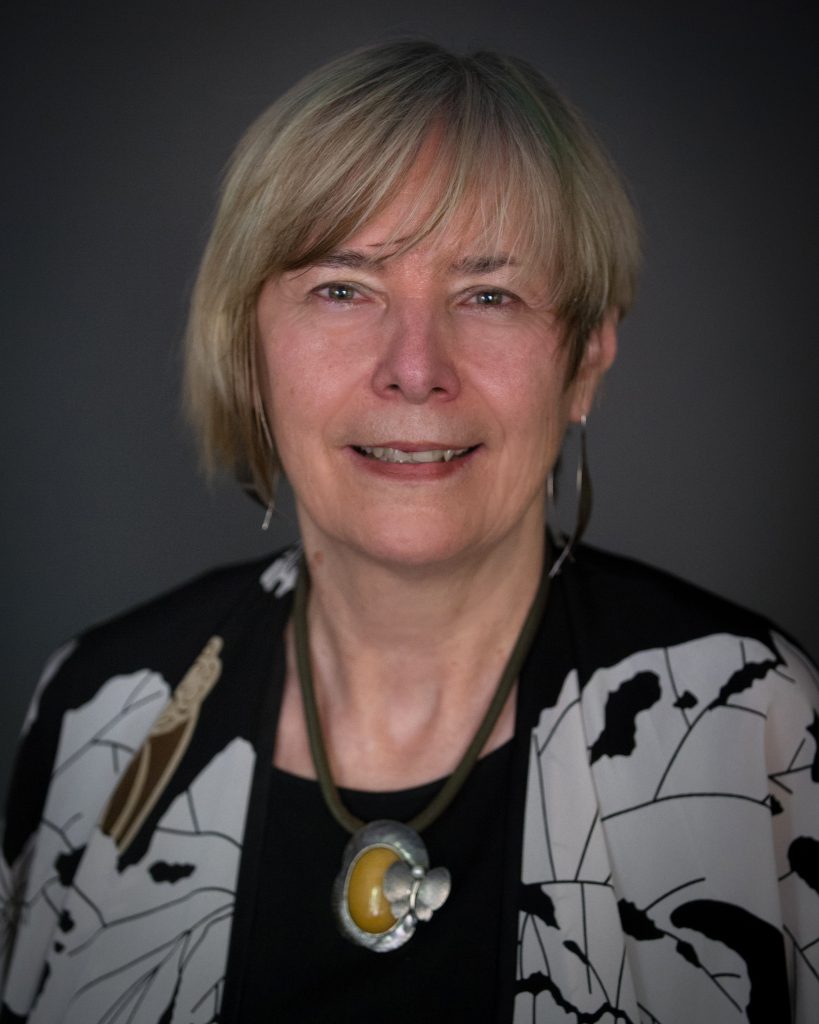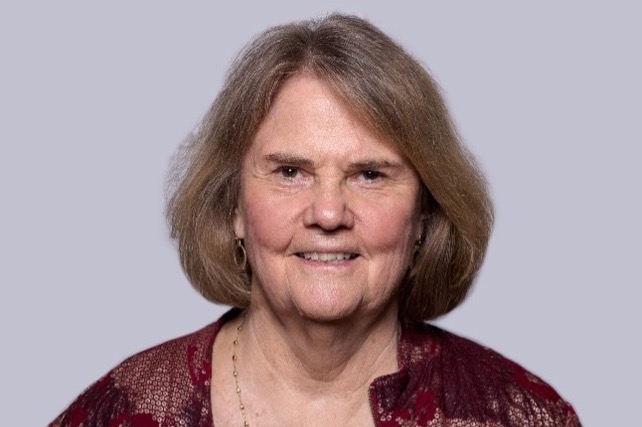SIT language-acquisition experts contribute to new book
December 16th, 2021 | SIT Graduate Institute

Plurilingualism refers to an individual’s use of more than one language, as opposed to “multilingualism,” the term that applies to a culture or country using more than one language. When a teacher of an additional language facilitates the learning of that language by exploring and including the languages and cultures of the students, plurilingualism becomes a pedagogical practice.

SIT’s MA in TESOL program offers a concentration in plurilingual pedagogy, and SIT boasts two internationally recognized experts in the subject, Professor Emerita Diane Larsen-Freeman and Professor Elka Todeva. The two recently collaborated to pen a chapter of The Routledge Handbook of Plurilingual Language Education (edited by Enrica Piccardo, Aline Germain-Rutherford, and Geoff Lawrence). Their chapter, “A Sociocognitive Theory for Plurilingualism: Complex Dynamic Systems Theory,” joins the contributions of many other experts in an expansive exploration of theory and practice around the idea of plurilingualism in language education.
The two professors also collaborated in their answers to our questions about plurilingualism and their contribution to the Routledge Handbook.

Your chapter in the Routledge book contains a lot in its title: "A Sociocognitive Theory for Plurilingualism: Complex Dynamic Systems Theory." Could you tell me in terms for the uninitiated what your chapter is about?
Despite the fact that plurilingualism has attracted a great deal of attention among language educators, it lacks a theoretical grounding. Our chapter was invited to fill this gap. Having a theory can help us give meaning to observations, generate new questions, and provide coherence in our field.

We offer Complex Dynamic Systems Theory (CDST) for this purpose. CDST is a “post-structural systems” theory. A system is a collective whole, made up of interdependent parts. The “socio-" and “cognitive” in our title reflects one application of this notion of interdependent constituents. Language education researchers have argued for a long time about the fundamental nature of language acquisition: Is it a social process or a cognitive one? Of course, most would say it is both, but CDST goes beyond mere pluralism in order to show how they are interconnected in the language acquisition process.
CDST can accommodate the unique repertoire of language resources of a plurilingual speaker, which connect the individual and the social. Speakers are perpetually updating their repertoires in a nonlinear manner.
There are three other characteristics of CDST that we highlight in our chapter: a) the fluidity of dynamic systems, b) their non-finality and shape due to interdependent social and cognitive processes, and c) their focus on the individual as a social agent.
What does "plurilingualism" mean?
Plurilingualism is a term that came into applied linguistics and language education through French and Italian sources. For years, Anglophone scholars favored the term “multilingualism” to describe individual and societal linguistic diversity.
Plurilingualism gained visibility primarily after the publication of the Common European Framework of Reference for Languages (CEFR) in 2001. The Common European Framework of Reference distinguished between plurilingualism as an individual phenomenon, focused on the linguistic repertoires of individuals “in which all linguistic abilities have a place,” and multilingualism viewed as a societal phenomenon, “seen as the coexistence of different languages in a given society.”
Instead of emphasizing the sequence of language acquisition in a person’s repertoire ... plurilingualism refers to the whole scope of one’s language resources as it exists at any one time.
Plurilingualism has ushered in a new way of thinking about meaning-making and communicative processes. It embraces the concept of a person’s linguistic and semiotic repertoire—a dynamic, never complete, constantly changing constellation of developing languages and registers shaped by life experiences and trajectory rather than one’s birth. Instead of emphasizing the sequence of language acquisition in a person’s repertoire—as L1, L2, etc.—plurilingualism refers to the whole scope of one’s language resources as it exists at any one time. It objects to a monolingual bias, and it brings into bold relief the agency of language learners/users.
As we pointed out in the book chapter, plurilingualism is the lived experience of millions of people around the world.
When you add "pedagogy," what does the overall term mean?
Plurilingual pedagogy is enacted in classrooms that embrace linguistic diversity, and strategically and deliberately tap into the rich linguistic and cultural knowledge and experiences of the learners and teachers who we think of as co-explorers.
Consistently creating spaces for cross-linguistic and cross-cultural explorations, these classrooms facilitate, expedite and maximize people’s communicative capacities, learning, and plurilingual and pluricultural awareness. These classroom experiences have been shown to lead to better and deeper learning; they foster empathy and better understanding of other people and cultures; and they unleash creativity and better learner investment.
So, on a practical level, what does it mean to bring this concept into the classroom? How do you teach a language with multiple languages and participants who don't all speak the same language(s)?
For language teachers to become successful practitioners of plurilingual pedagogy, they need above all a significant shift of mind—a metanoia—to use a lovely Greek term; a profound, encompassing shift of mind and a fundamental change of orientation. Plurilingual pedagogy practitioners do not have to know the languages of all those present; all they need is to provide the space for focused cross-linguistic and cross-cultural explorations.
When teachers consistently and strategically engage in such comparisons and explorations, learners become skilled at creating and testing hypotheses about how languages work.
When not constrained by society-imposed gatekeeping, our communicative repertoires naturally include a wide range of linguistic and modal resources that can take us beyond traditional print-oriented, target language–only teaching. When we bring the two together, we open possibilities for students to connect their new language to their prior knowledge in dynamic ways, emphasizing their agency and creativity.
Plurilingual pedagogy practitioners do not have to know the languages of all those present; all they need is to provide the space for focused cross-linguistic and cross-cultural explorations.
Plurilingual classes are much more intellectually stimulating and emotionally engaging. Any aspect of language can be the object of a fascinating exploration – from comparison of distances between speakers and the amount and type of physical contact involved, to gestures used to attract someone’s attention or to express puzzlement or amazement, to the way users of the language situate actions and events in time.
Drawing on their professional expertise, teachers can focus explorations on linguistic features that are likely to prove interesting and in line with their instructional priorities. This process allows better prioritization; it affords the learners agency content- and process-wise, and harnesses their curiosity, while lightening the burden of planning for teachers. Sustained, guided, and clearly focused deeper explorations not only lead to a better understanding of key target language patterns, but also reveal the uniqueness and beauty of the learners’ languages.
What does plurilingual pedagogy allow you to do as a teacher that you wouldn't do otherwise?
Adopting a plurilingual, multimodal mindset helps teachers and students bring their practices in line with the increasingly complex ways people make meaning and share and access knowledge these days.
To this day, many language institutions and many teacher training programs approach the learning of language as a problem people need help with.
Almost 30 years ago, Richard Ruiz invited us to consider three different orientations to language: a) language as a problem, b) language as a right, and c) language as a resource.
To this day, many language institutions and many teacher training programs approach the learning of language as a problem people need help with. In contrast, Ruiz’s language-as-a-resource orientation helps us take full advantage of the rich linguistic and cultural knowledge of language learners. Ruiz’s language-as-a-resource orientation remains under-used. Our MATESOL program offers guidance on the theory and practice of this language orientation. The addition of the plurilingual pedagogy advanced seminar to our curricula is one more opportunity for educators to go more deeply into this area.
SIT is a leader in language education. What role does it play in the world of plurilingual education?
Our MATESOL program was one of the earliest proponents of plurilingual pedagogy in North America, with conference presentations and workshops offered in the early 1990s. Our faculty is actively engaged with some of the key centers for plurilingual and multilingual studies, including The Ontario Institute for Studies in Education of the University of Toronto, Georgetown University’s Initiative for Multilingual Studies, and McGill University’s Plurilingual Lab, to mention just a few.
Elka made a presentation at the Georgetown University Round Table in 2020, whose theme was “Multilingualism: Global South and Global North Perspectives.” In addition, with a colleague from the Basque Country, Elka is the co-editor of a book entitled The Multiple Realities of Multilingualism: Personal Narratives and Researchers’ Perspectives. The book offers much-needed emic data that shed critical light on many key findings to complement existing language development studies.
Diane, SIT professor emerita, has explored language and teaching through the prism of CDST since 1997. She continues to make presentations on CDST at domestic and international forums including just last month for online conferences in Mexico and in Brazil and for an in-person seminar series at Boston University. Her book with Lynne Cameron, Complex Systems and Applied Linguistics, won the Modern Language Association’s Kenneth Mildenberger Book Prize. The chapter we co-authored for the Routledge Handbook of Plurilingual Education is one of our latest publications in this area.
Most recently, Elka was invited to submit a paper for a special issue on plurilingualism for a TESL Canada Special Issue, “Plurilingualism and Translanguaging: Pedagogical Approaches for Empowerment and Validation.” (October 2021). The paper is entitled “Plurilingualism and Multimodality: The metanoia within reach.” Elka co-authored this article with her former student, Riah Werner, a doctoral student at OISE, which is just one indication that the torch is being passed to the next generation of SIT students and alumni who are spreading the ideas and practices that the MATESOL Program has been working on for over 50 years!
References
Larsen-Freeman, D. & Todeva, E. (2021). A sociocognitive theory for plurilingualism: Complex Dynamic Systems Theory. In E. Piccardo, A. Germain-Rutherford, & G. Lawrence (Eds.), The Routledge Handbook of Plurilingual Language Education. Routledge
Ruiz, R. (1984). Orientations in language planning. NABE: The Journal for the National Association for Bilingual Education, 8(2), 15–34.
Senge, P. M. (2013). Give me a lever long enough … and single-handed I can move the world. In M. Fullan (Ed.), The Jossey-Bass Reader on Educational Leadership. (3rd ed., pp. 3–16). John Wiley & Sons.
Werner, R. & Todeva, E. (forthcoming). Plurilingualism and multimodality: The metanoia within reach. TESL Canada Special Issue: Plurilingualism and Translanguaging: Pedagogical Approaches for Empowerment and Validation.
